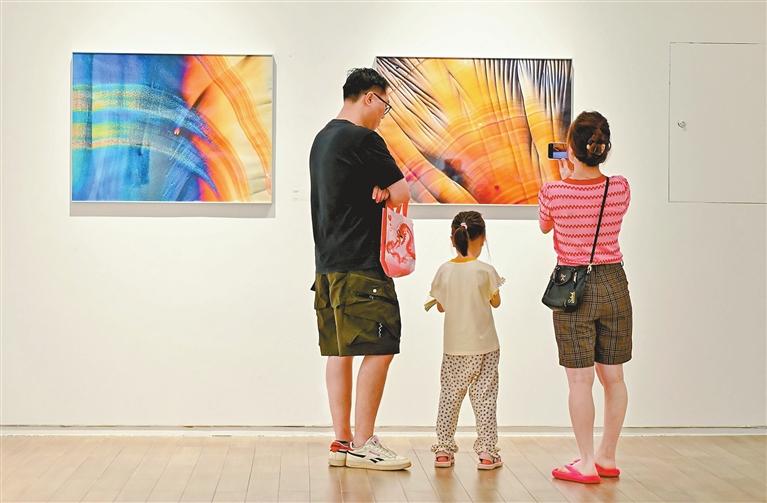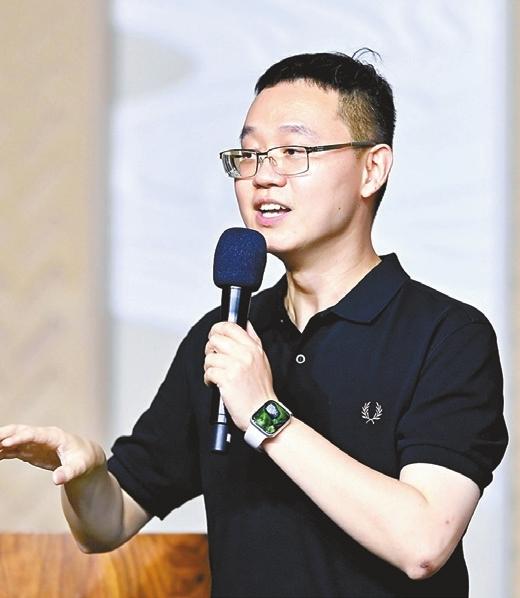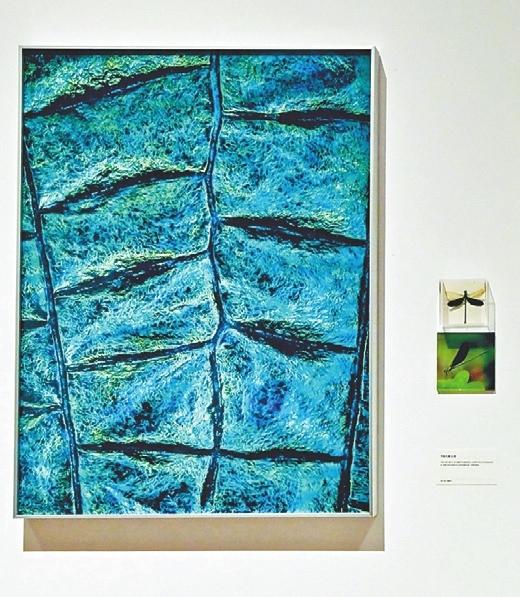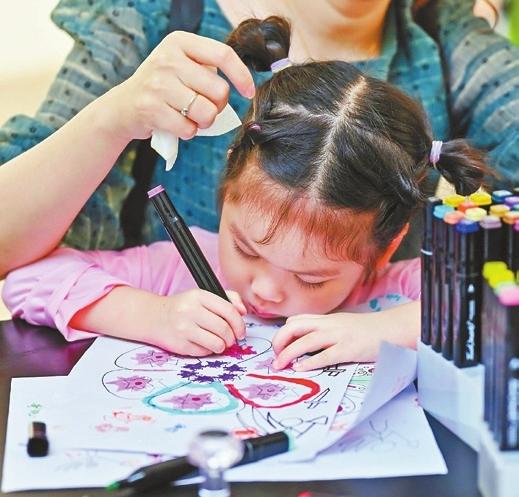



Debra Li debra_lidan@163.com SCIENCE and art, like a pair of twins, were born from human curiosity and millennia of individuals exploring nature and themselves. Science, based on reason and evidence, seeks truth, while art, through the complexity of human emotions, seeks both beauty and truth. “Sci-Art Wonders,” an ongoing exhibition at the Guangming Culture and Art Center (GCAC), explores the possibility of a new perspective that blurs the boundary between science and art, reestablishes our bond with nature, and sparks a passion for scientific exploration in youth. The exhibition features 110 photography works and six short films displayed on the third floor of the venue. Running until July 28, the exhibition consists of five parts: “Rhythm of Life,” “Magic of Creation,” “Micro Vistas,” “Valley of Wonders,” and “Hey! Elements.” A special segment of the show also showcases 18 award-winning photos from the Second Shenzhen Bay Laboratory Photography Contest. In “Rhythm of Life,” visitors are treated to stunning visuals of the wing patterns of Japan’s national butterfly, the great purple emperor, and the tail feathers of a blue peacock. The “Magic of Creation” section reveals the stunning structures of malachite rock and nonwoven fabric through a microscope, leaving visitors in awe of the intricate wisdom inherent in both nature’s creations and human inventions. “Micro Vistas” presents unexpected images captured during physical and chemical experiments, and the “Valley of Wonders” section conjures up AI-generated images by combining photos of flora with images of inorganic compounds. “Hey! Elements” is a favorite among young visitors. This section invites visitors to explore the 118 chemical elements currently known to science and learn about their characteristics through a stamp-collecting activity and by answering questions. Each visitor can receive a souvenir postcard featuring one of the elements. Also in this section, children have the opportunity to color drawings made by Ernst Haeckel, a German biologist and naturalist active in the late 19th and early 20th centuries, with 140 shades of markers. Haeckel’s colorful and stylized drawings, watercolors, and sketches reveal microscopic views of different forms of plant life that shed light on the intricate details of Earth’s natural forms. Zuo Qianqian, curator of the museum, said, “The word ‘wonder’ often evokes spectacles like the Great Wall or Stonehenge. These exhibits reveal that wonders can also be hidden in the bodies of tiny creatures. For example, through a microscope, the body of a tiny beetle appears adorned by millions of sapphires.” Zhu Wenting, co-founder of Beauty of Science, a tech firm specializing in pop-science publications and science education that co-organized the exhibition, said scientific discoveries and technological advances offer us the opportunity to view and experience the beauty of the world in unprecedented ways. On May 26, the opening day of the exhibition, Gao Xin, who holds a Ph.D. from the Technical Institute of Physics and Chemistry, Chinese Academy of Sciences (CAS), gave a lecture at the venue. Gao explored questions such as “What is science?”, “How do you picture a scientist?”, and “Is science beautiful?” He also encouraged the audience to rediscover the fun and beauty of science. Since its opening in 2020, the GCAC’s Art Museum has aimed to innovate and offer new experiences to its audiences, focusing on the fusion of science and art. Previous exhibitions in this vein include “Futurology of Art” (2020), “The Crossing” (2021), “Looking for Schrodinger’s Cat” (2021), and “Solidified Dimension” (2022). The current exhibition will feature a host of lectures, workshops, and chemistry experiment demonstrations on the sidelines. Readers can follow the museum’s WeChat account (ID: GCACArtMuseum) for further details and reservations. | 
